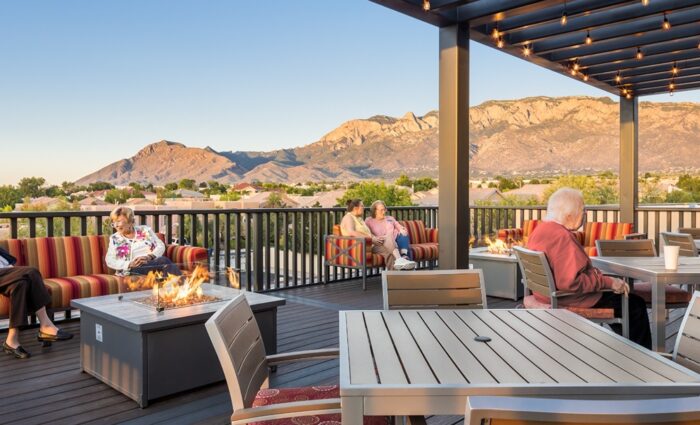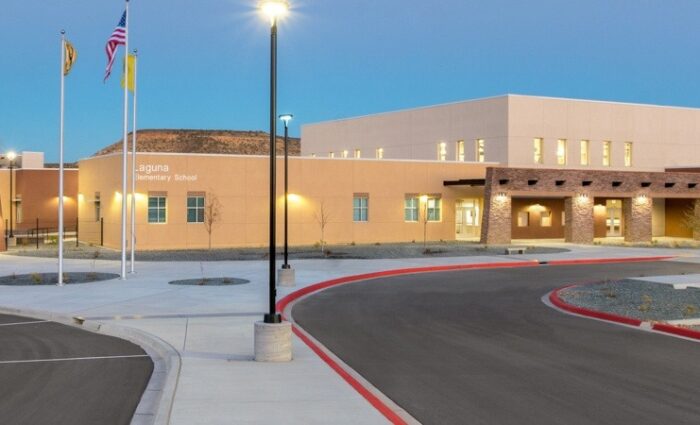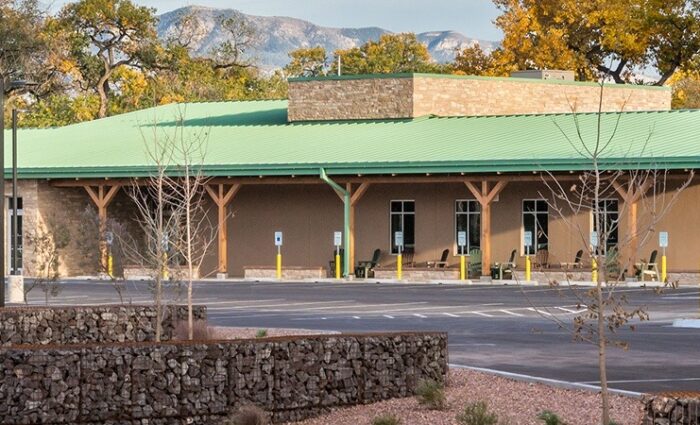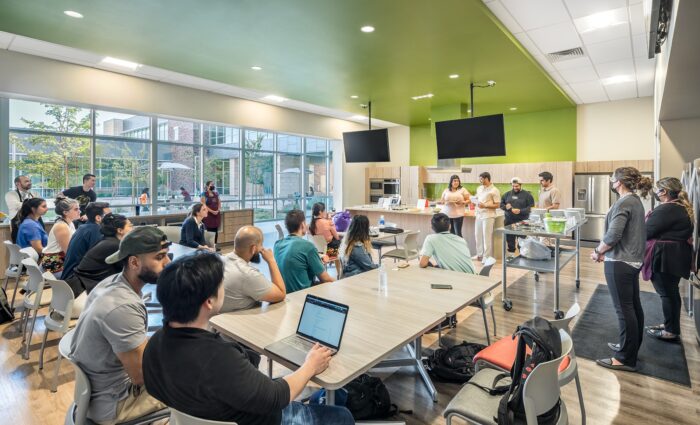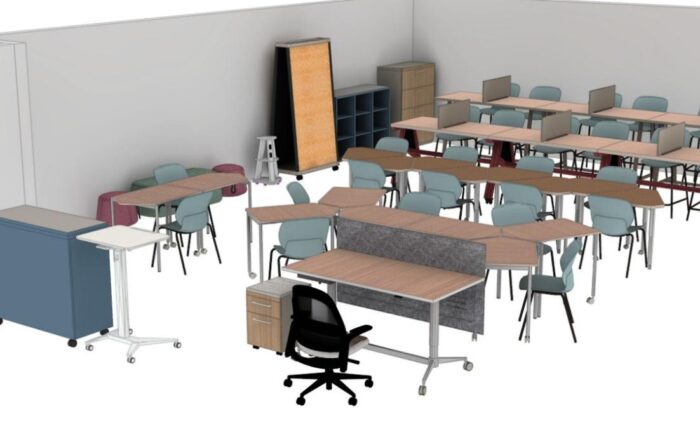How Classroom Furniture Affects Student Success
Active-learning is a trend affecting many educational facilities. The teacher is no longer the purveyor of information - spewing out facts for passive listeners to ingest. Instead, students are directly involved in the teaching and learning process, with the instructor guiding the proceedings as the "Meddler-in-the-Middle" rather than the "Sage-on-the-Stage."
As a concept, active-learning has been around for a long time (think kindergarten and hands-on, exploratory learning), but now we're seeing more and varied implementations through the use of furniture.
Moveable Classroom Furniture

At New Mexico State University (NMSU), classroom furniture for the Undergraduate Learning Center is moveable to suit a particular lesson or teacher. Tables and chairs can be reconfigured, with video monitors and whiteboards on each wall, allowing small groups to prepare and research work, and then to display and present to the entire class. These active-learning seminar rooms are "hybrid", for they can be arranged into a traditional lecture setup if desired.
Fixed Classroom Furniture

Implementing another version of active-learning classrooms, the University of New Mexico (UNM) Collaborative Teaching and Learning Building uses the SCALE-UP (Student-Centered Active Learning Environment for Undergraduate Programs) model.
These classrooms utilize fixed, 9-person tables that accommodate small groups. Instructors describe these tables as the "most important piece of technology in the room" because they don't create a hierarchy and allow for collaboration. More robust electronic technology at each table supports easy development and display of information. Initially developed for STEM subjects, SCALE-UP classrooms are beginning to show popularity for humanities courses.
Just a Fad or Real Results?

Many universities and colleges have embraced active-learning classrooms, and we're seeing requests for them at the high school level as well. But is this just a fad? Can classroom furniture really lead to learning gains? The quick answer is no - new furnishings will not affect student achievement. But when coupled with the proper technology and - most importantly - a change in pedagogy, data shows very clearly that active-learning classrooms have measurable impacts on academic performance.
Results from UNM, UMN, MIT, NC State and other colleges and universities:
- Increased classroom engagement of both students and faculty
- Higher attendance rates (up to 90%)
- Conceptual gains of more than 20%
- Higher final grades of up to 10%
- Pass rate increases from 78% to 90%
- Failure rates for women and minorities less than 1/3 the standard rate
A UNM study compared student gains for a single instructor who taught the same courses in both a traditional and SCALE-UP classroom. The data show normalized gains for active-learning classrooms to be more than twice the gains seen in traditional settings. As long as the instructors using the new classrooms understand how to modify their curriculum to take advantage of the rooms, significant learning gains can be made.
Active-Learning Design
In collaboration with two faculty at the University of New Mexico, I recently gave a presentation about active-learning design for higher education classrooms at the Texas College and University Facilities (TCUF) conference in Dallas, TX. It was presented again at the A4LE Southwest Regional Conference in 2015. View the presentation below for highlights from our research.
Related Content

Design a career path with more bridges.
Looking to break down the walls of the status quo?

